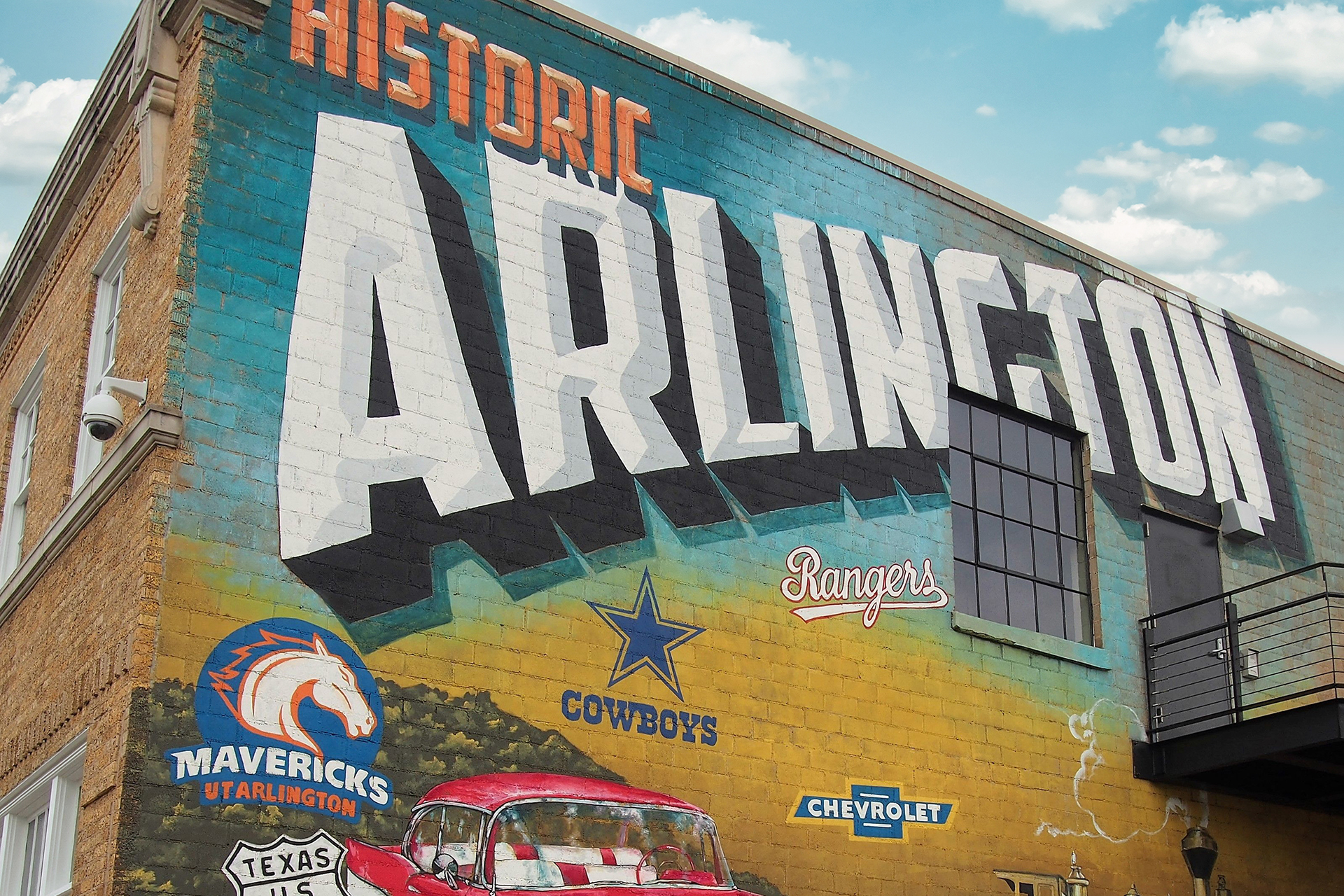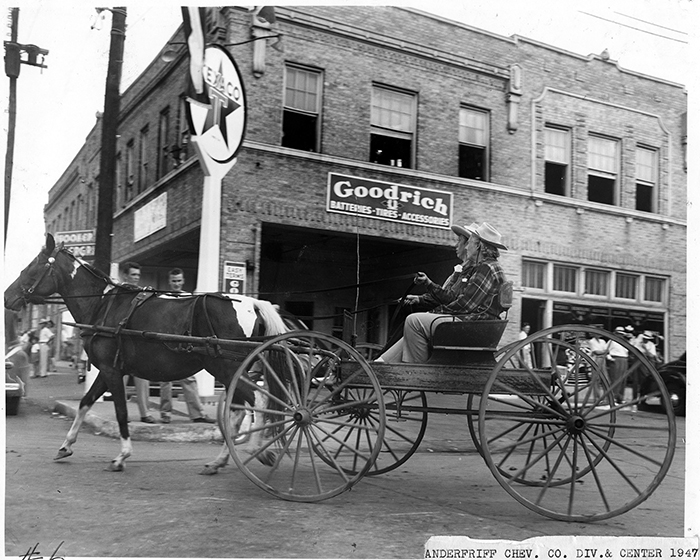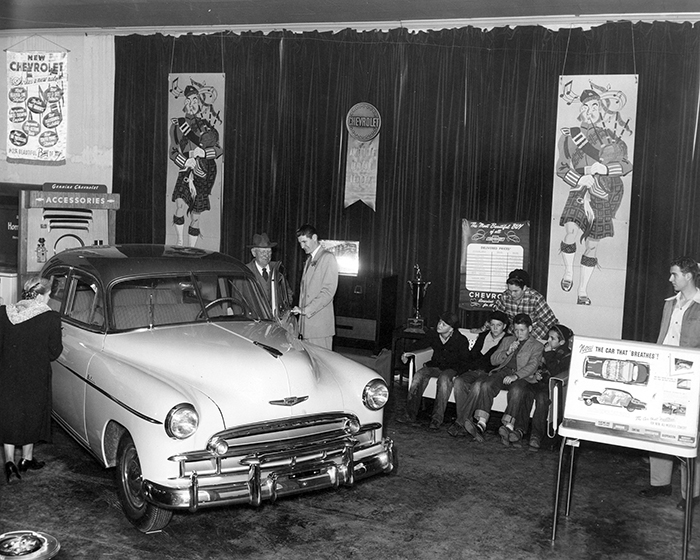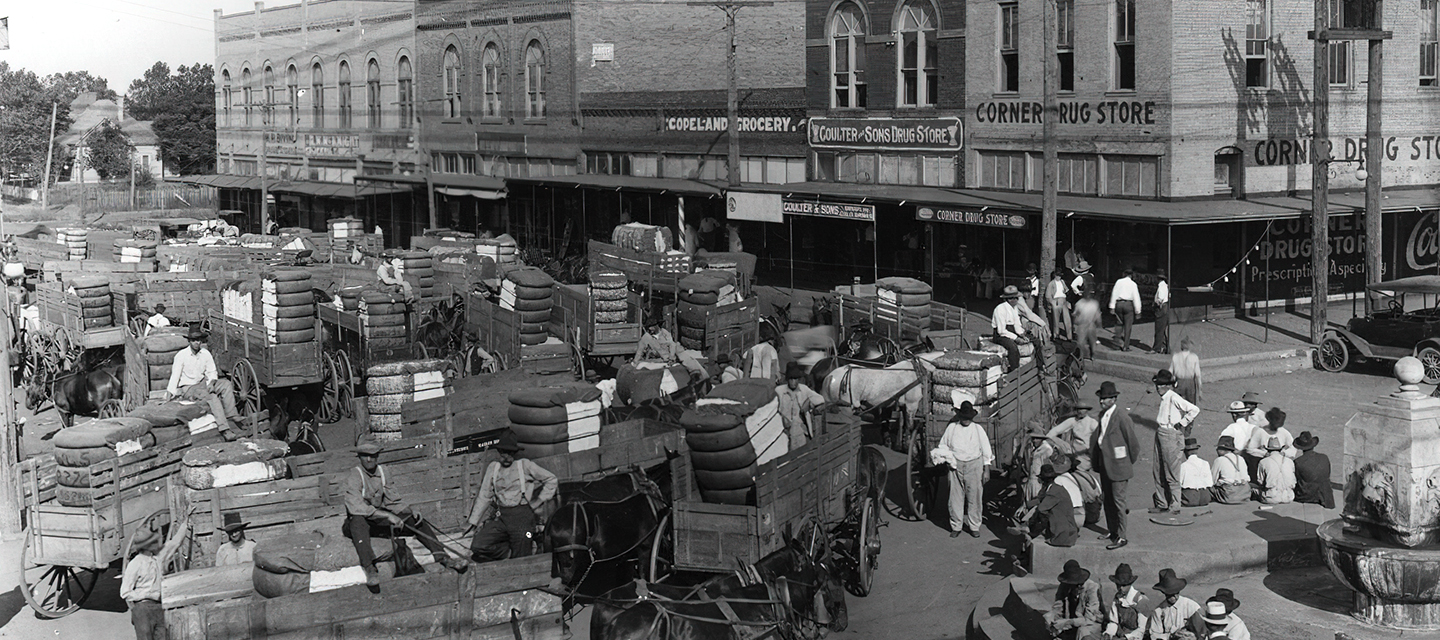
From Hayter to the Hill: Tour Historic Downtown Arlington (Part 2 of 2)
In the newsletter’s previous issue, we completed part 1 of our Historic Tour of Downtown Arlington. Part 1 started in Founders Plaza. We visited Andrew Hayter and learned about some of the founding families. City Center Plaza had World War II tributes, the City of Arlington historical marker at City Hall, and the downtown library to explore local history and genealogy. Knapp Heritage Park and Arlington Music Hall came towards the end, with the Bankhead Highway through Arlington historical marker as the finale.
Part 2 Highlights:
- Historic Vandergriff Building
- First United Methodist Church of Arlington
- Old Town Historic District
- The Hill Neighborhood
Part 2 starts at Center and Division Streets with the Historic Vandergriff Building. With construction completed in 1928, it’s the oldest commercial structure remaining in Arlington. Vandergriff Chevrolet occupied the building from 1937 to 1966.
In 1937, the Vandergriffs arrived in Arlington. While not one of the founding families, their influence is no less important. Tommy Joe Vandergriff, also known as Tom J., served as Arlington’s mayor from 1951 to 1977. His leadership helped bring General Motors Assembly Plant, Lake Arlington, Six Flags Over Texas, and the Texas Rangers to our city. From jobs to entertainment and prosperity to growth, Arlington still feels Mayor Vandergriff’s impact.
Today, the Historic Vandergriff Building is a City of Arlington Local Landmark and on the National Register of Historic Places. There are four historical markers on the building, two Vandergriff Chevrolet signs and a large mural painted on its south wall. The neon signs, while a nice addition, aren't historic and were added during renovations. The building's location near the center of the city’s original boundaries further cements its place as a significant structure in Arlington.


Let’s cross Division Street and continue with the tour. Next up is the First United Methodist Church of Arlington. In 1885, a wooden church was located at this site. Over 130 years later -- at the same site with continuous service -- and the church is thriving with over 5,000 members. The church, with its Gothic Revival architecture, is a City of Arlington Local Landmark. It’s also a United Methodist Historic Site and has a Texas Historical Marker.
Further north on Center Street is the Old Town Historic District. Inside the district is the Old Town Neighborhood. It’s listed in the National Register of Historic Places.
According to the district’s marker - “Old Town Historic District encompasses approximately seven blocks of late 19th century and early 20th-century residential properties. Located at the northern edge of Arlington’s original town plat, the district’s boundaries include Sanford, North, Elm, and Oak Streets. Architectural styles in the neighborhood include Pre-WWII housing, Queen Anne, Colonial Revival, Bungalow, and Art Moderne. Early residents include city pioneers, community leaders, and merchants.”
Located across from the marker is the boundary for the North Edge of the Original Town. (The marker for the southern boundary is also on Center near South Street.)
After exploring the Old Town Historic District, make your way back to Division Street and head west. Turn right onto N.L. Robinson Drive. Part of West Street, the city renamed a portion of this street after Pastor Dr. Norman Lee Robinson of nearby Mount Olive Baptist Church.

Northwest of the original city boundaries was a five-block area known as “The Hill”. Its area includes Sanford, West (N.L. Robinson Drive,) Prairie, and Taylor streets. At one time, it was the only area designated for the city’s African-American residents. The Hill’s most significant impact was in the period 1890-1950 before desegregation. It remains a vital part of Arlington’s history. Churches and schools were fixtures of The Hill neighborhood, along with homes, stores, and a park.
In addition to Mount Olive Baptist Church, there is what’s now known as the Armstrong AME Church and the Arlington Church of God in Christ. All three churches were founded in the 1890s and are still spiritual pillars of the community. All three also have Texas Historical Markers on-site.
The final stop on the tour is 400 W. Sanford Street. It’s the address for George Stevens Park. Mr. Stevens served as a Principal of Booker T. Washington elementary and middle school from 1941-1965. It was one of Arlington’s first black schools and later became part of AISD. During his tenure, the school tripled in size. As a tribute to Mr. Stevens and his impact, George Stevens Park is located near the school. Located in the park is a Texas Historical Marker for “The Hill”.
With that, our tour of Historic Downtown Arlington comes to an end. From Hayter to The Hill, we’ve seen significant pieces of Arlington’s history. The distance on a map is less than a few miles, but we’ve traveled back in time to some of Arlington’s earliest and most prominent people and events. The next time you’re on Center Street, take a trip through the past and tour Historic Downtown Arlington.

